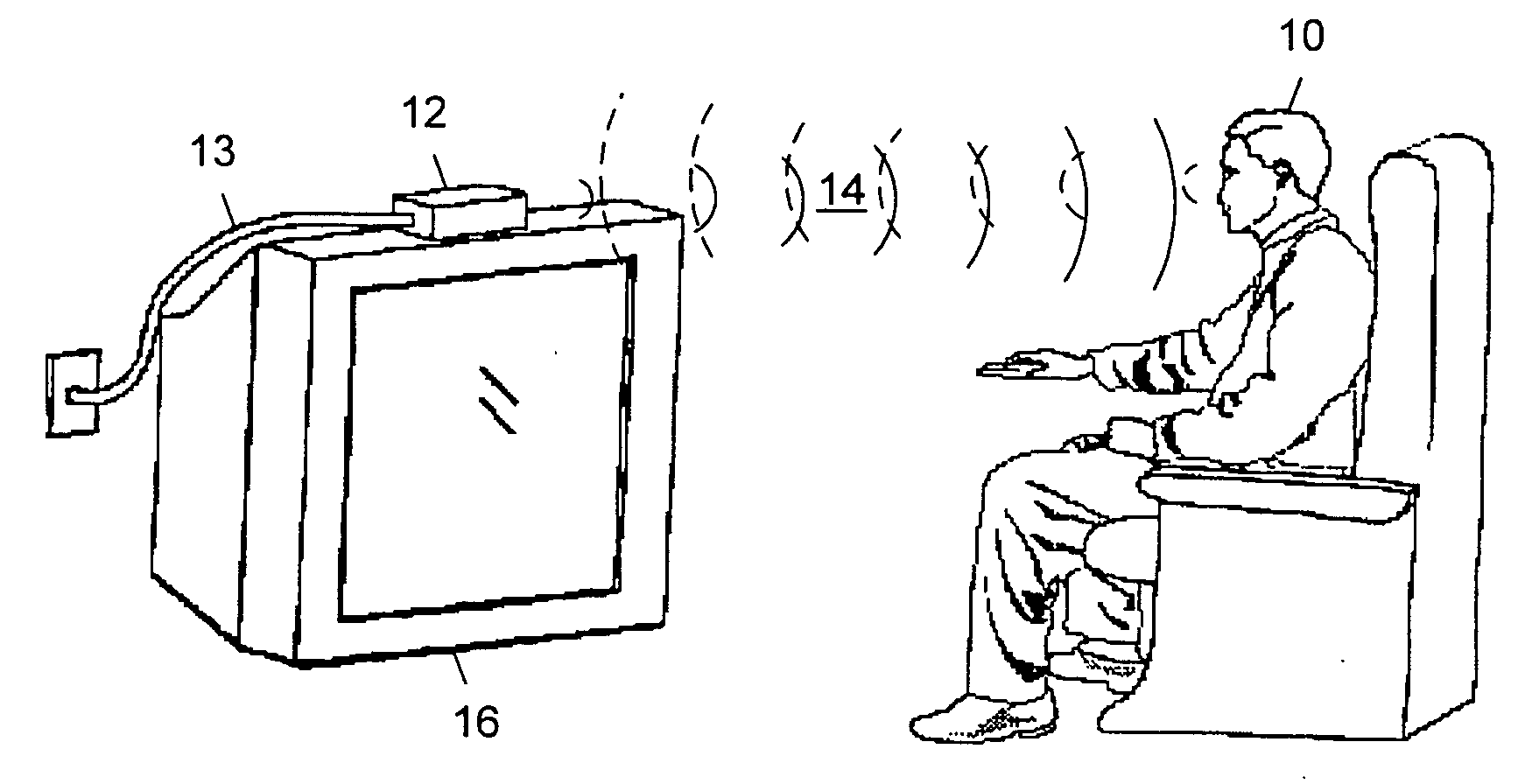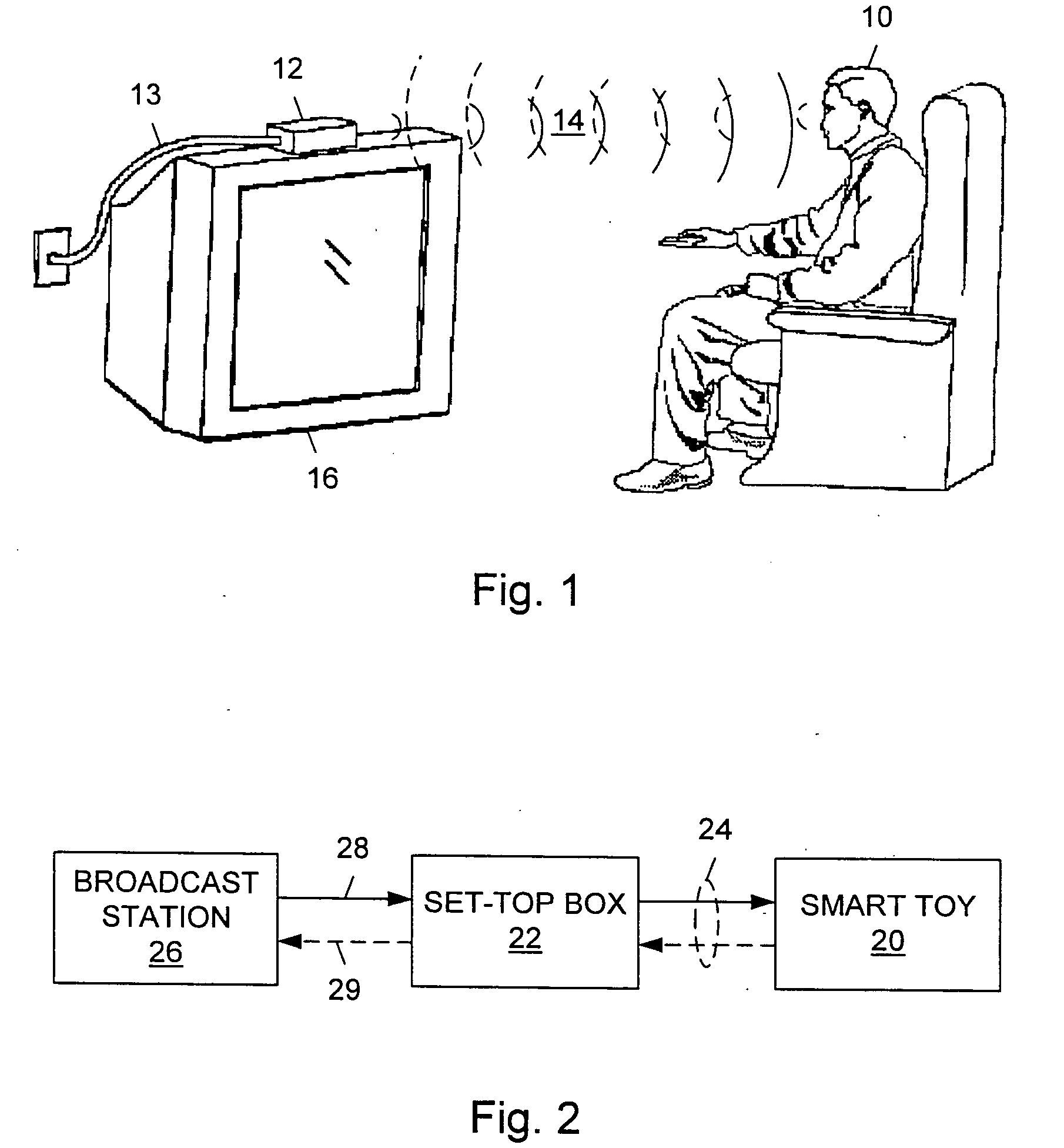Networking smart toys
a smart toy and network technology, applied in the field of smart toys, can solve the problems of limited utility of smart toys, inability to reprogramme or upgrade them to perform additional activities, and many of them are limited in their activities, so as to achieve the effect of easy and seamless establishmen
- Summary
- Abstract
- Description
- Claims
- Application Information
AI Technical Summary
Benefits of technology
Problems solved by technology
Method used
Image
Examples
Embodiment Construction
[0023] The invention comprises a system and method for programming a smart toy using a broadcast television system. Referring to FIG. 1, one embodiment of the invention is illustrated. Smart toy 10 is depicted as a doll. Smart toy 10 is coupled to a receiver 12 which, in this embodiment, is a set-top box. Receiver 12 accepts a signal via cable 13. The signal comprises interactive television programming which is delivered to cable 13 and receiver 12 by a broadcast network (not shown). The broadcast network will be described in more detail below. Receiver 12 separates the interactive television signal into its various components. These components include audio and video data, receiver data and toy data. The audio and video components of the signal may consist of an ordinary television signal such as an NTSC or other standard-format television signal. The receiver data may consist of control information, interactive applications or other data which can be used by receiver 12 to perform...
PUM
 Login to View More
Login to View More Abstract
Description
Claims
Application Information
 Login to View More
Login to View More - R&D
- Intellectual Property
- Life Sciences
- Materials
- Tech Scout
- Unparalleled Data Quality
- Higher Quality Content
- 60% Fewer Hallucinations
Browse by: Latest US Patents, China's latest patents, Technical Efficacy Thesaurus, Application Domain, Technology Topic, Popular Technical Reports.
© 2025 PatSnap. All rights reserved.Legal|Privacy policy|Modern Slavery Act Transparency Statement|Sitemap|About US| Contact US: help@patsnap.com



